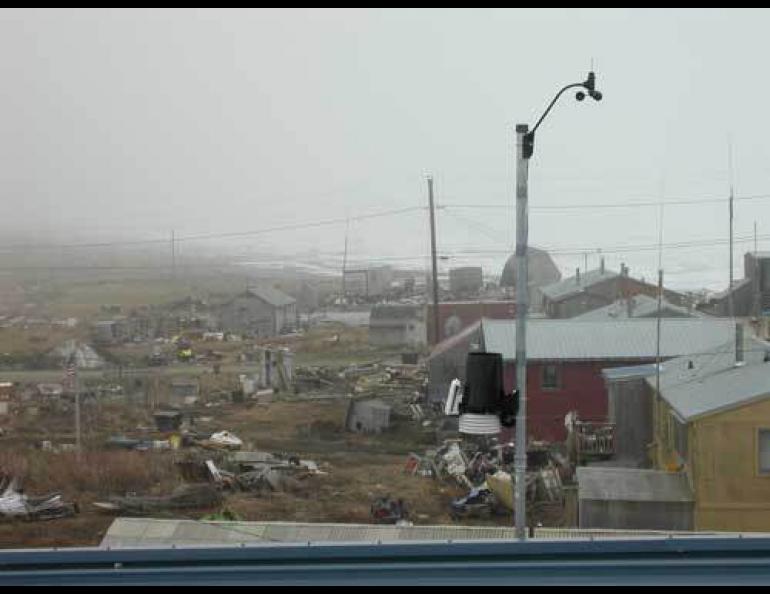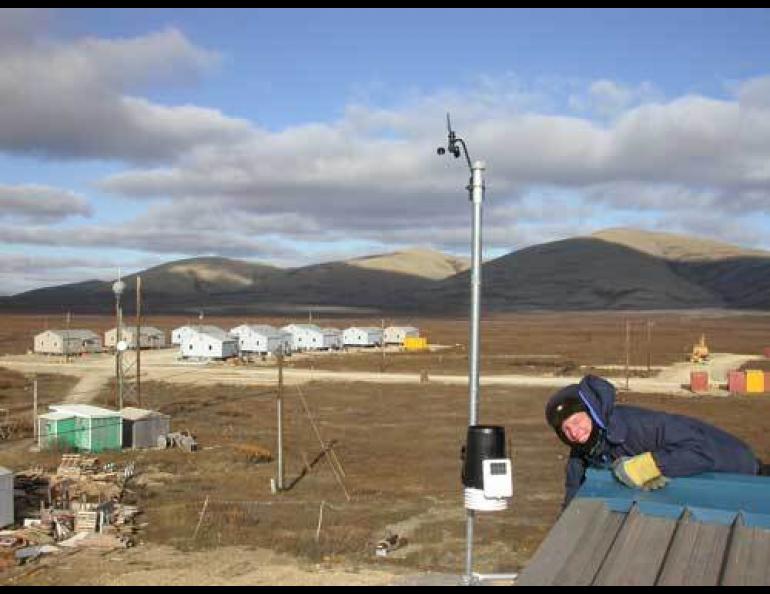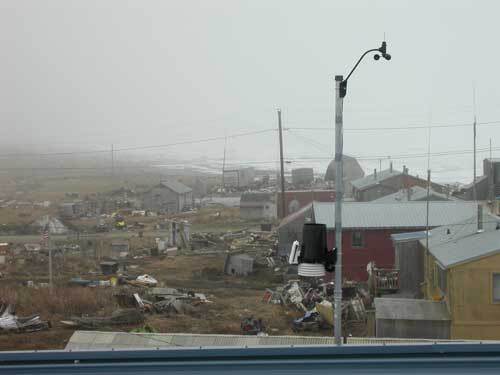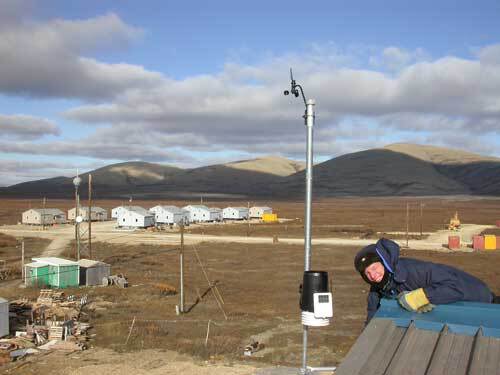

Weather stations for Seward Peninsula schools part of grant program
Greg Finstad and his crew with the University of Alaska’s Reindeer Research Project had endured a rough day on Alaska’s Seward Peninsula, driving 65 bumpy miles to the village of Teller only to find the wind blowing so hard that they couldn’t launch a boat on Grantley Harbor to help out a reindeer herder.
A guest at the Reindeer House, I told Greg about a weather station we had installed on top of Teller’s school as part of the Arctic Climate Modeling Program. The station was broadcasting weather information to the Internet, and showed the current Teller wind speed was 24 miles per hour with gusts to 41.
Finstad bookmarked the Teller weather station on his laptop, and I felt a bolt of satisfaction. Here, a researcher in the field was using one of the weather stations installed by our crew from the Geophysical Institute, and he’d check the wind speed with it the next day to see if he and his crew would make the drive back to Teller.
For a few weeks in June and July, I traveled with Dave Atkinson of the International Arctic Research Center and Ed Plumb of the National Weather Service to villages on the Seward Peninsula, the nose of Alaska that juts westward into the Bering Sea. The few dozen villages that hug the coast of the peninsula take a pounding from storm systems that spin through the Bering Strait. Sea ice that forms on the ocean acts like a protective cap during some winter storms, but the ice has been less dependable in recent years, leaving some villages like Shishmaref exposed to storm surges that eat at its sandy coastline.
My boss, Kathy Berry Bertram, wrote a grant funded by the National Science Foundation to give life to the Arctic Climate Modeling Program that involves the 15 schools in the Bering Strait School District. Teachers from St. Michael to Shishmaref will get training and curriculum from the program, and students and teachers will use real-time weather information from Davis weather stations we are installing on or near village schools. Finstad used information from the one Atkinson and I installed on Teller school. Plumb and his colleagues at the National Weather Service are interested in getting all the schools’ weather stations on the Internet to help with forecasting; some of the villages have automated weather stations, but the Weather Service has some holes we might be able to help fill, such as in White Mountain and Elim.
We’ve had a fun time installing the stations, getting a tour of the shifting sands of Shishmaref from teacher Ken Stenek, hiking the Continental Divide near Wales after an install, seeing a group of villagers slice up a 54-foot bowhead whale in Savoonga, and having a nice caribou dinner with teacher Jack Adams in White Mountain.
Hopefully by the end of this summer we’ll have weather stations installed in all the schools on the peninsula (and on St. Lawrence Island), and when all the science teachers get back this fall they’ll be able to use the stations with their students. As a bonus, we hope to get all the weather stations on the Web, and people like Greg Finstad can use them to get the current weather not only in Teller, but also in Koyuk, Shaktoolik, Elim, White Mountain, Wales, Shishmaref, Unalakleet, Golovin, St. Michael, Stebbins, Brevig Mission, Savoonga and Gambell.






